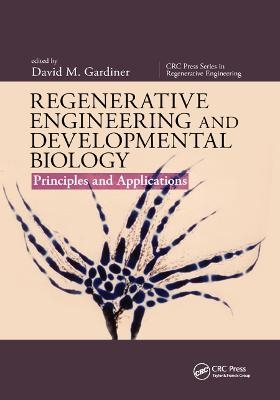
Regenerative Engineering and Developmental Biology
CRC Press (Verlag)
978-0-367-87309-7 (ISBN)
Regenerative Engineering and Developmental Biology: Principles and Applications examines cutting-edge developments in the field of regenerative engineering. Specific attention is given to activities that embrace the importance of integrating developmental biology and tissue engineering, and how this can move beyond repairing damage to body parts to instead regenerate tissues and organs. The text furthermore focusses on the five legs of the field of regenerative engineering, including: materials, developmental biology, stem cells, physics, and clinical translation. This book was written by leading developmental biologists; each chapter examines the processes that these biologists study and how they can be advanced by using the tools available in tissue engineering/biomaterials. Individual chapters are complete with concluding remarks and thoughts on the future of regenerative engineering. A list of references is also provided to aid the reader with further research. Ultimately, this book achieves two goals. The first encourages the biomedical community to think about how inducing regeneration is an engineering problem. The second goal highlights the discoveries with animal regeneration and how these processes can be engineered to regenerate body parts. Regenerative Engineering and Developmental Biology: Principles and Applications was written with undergraduate and graduate-level biomedical engineering students and biomedical professionals in mind.
David M. Gardiner is a professor in the Department of Developmental and Cell Biology at the University of California Irvine. He received his BA in Biology from Occidental College, his Ph.D. from the Scripps Institution of Oceanography at UCSD, and postdoctoral training at UC Davis. His research has been focused discovering the mechanisms regulating limb regeneration in salamanders. He pioneered the use of the axolotl (Ambystoma mexicanum) as a model system for studies of vertebrate regeneration, and developed the Accessory Limb Model as an assay for bioactive compounds that induce dedifferentiation, blastema formation and limb regeneration. This novel assay is the basis for ongoing studies to identify molecular pathways that regulate regeneration in humans. Professor Gardiner is a Fellow of the American Association for the Advancement of Science, a recipient of the Marcus Singer Medal for Excellence in Regeneration Research, and a recipient of the Frontiers in Stem Cell and Regeneration Biology Pioneer Award. He is an author on more than 100 articles, and has served on numerous peer review committees, journal editorial boards, and scientific advisory boards. At UCI he serves as the Associate Dean for Research and Academic Affairs for the Francisco J. Ayala School of Biological Sciences.
Introduction. Overview of principles of regeneration and development. What cells can do. Cellular proliferation. Cell migration. Regulation of differentiation and dedifferentiation. Epigenetics and the regulation of dedifferentiation. Signals associated with injuries that initiate regeneration. Wound healing—Basic review. Role of nerves—Neuro-epithelial interactions in salamander regeneration. Role of nerves—Neuro-epithelial interactions in mammalian development and regeneration. Inflammation and the role of the immune response. Bioelectricity. Regulation by the microenvironment and cell physiology. How cells remake the pattern and restore the function. Cellular contribution to regeneration. Morphogenesis—how the cells make structure. The information in the system that controls morphogenesis—the information grid. Information encoded by morphogens and growth factor signaling. Cell-Cell signaling. Regulation of positional information by the ECM and the spatial/temporal regulation of growth factor signaling. How to engineer regeneration using principles of regeneration and developmental biology. Organoids—Engineering a tooth. Neural regeneration. Heart regeneration. Skin regeneration and fibrosis—Learning how to talk to fibroblasts.
| Erscheinungsdatum | 31.12.2019 |
|---|---|
| Reihe/Serie | CRC Press Series In Regenerative Engineering |
| Verlagsort | London |
| Sprache | englisch |
| Maße | 178 x 254 mm |
| Gewicht | 453 g |
| Themenwelt | Medizin / Pharmazie ► Physiotherapie / Ergotherapie ► Orthopädie |
| Naturwissenschaften ► Biologie ► Genetik / Molekularbiologie | |
| Technik ► Maschinenbau | |
| Technik ► Medizintechnik | |
| ISBN-10 | 0-367-87309-5 / 0367873095 |
| ISBN-13 | 978-0-367-87309-7 / 9780367873097 |
| Zustand | Neuware |
| Haben Sie eine Frage zum Produkt? |
aus dem Bereich


